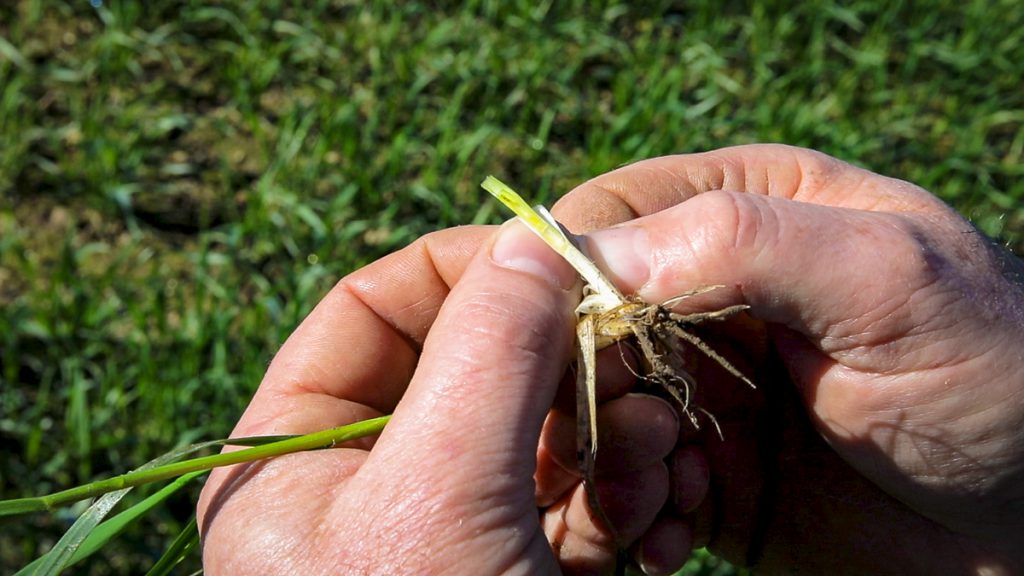In the second installment of CROPS WATCH, John Mulhare – TerraChem agronomist – caught up with Kevin Nolan of Nolan Farming. Winter wheat was up for discussion.
Kevin explained that he took a chance on sowing a lot of his winter wheat at the end of November and early December. This decision paid off, as we now see many farmers struggle to get spring crops sown.
However, ground conditions didn’t favour travel and, as a result, very little had been done with the crop up to April 20, when AgriLand visited.
Kevin had applied growth regulator and liquid nitrogen had been provided on April 19. The crop was due to receive Pacifica herbicide (400g/ha), Biopower (1L/ha) and Cameo Max (45g/ha) on the day of filming.
Crop stress
Crops, in general, are under stress. Kevin applied K2 at 1.8L/ha in mid-April to encourage tillering. In another bid to reduce stress and maximise nitrogen use efficiency, Uplift was applied at a rate of 3L/ha. John also advised a second application of Uplift at 3L/ha to reduce stress
Growth regulator
On the day AgriLand visited, the crop was approaching GS31. Kevin planned to apply CeCeCe at a rate of 1L/ha, mixed with Moddus at 0.2L/ha.
Kevin uses quite a bit of organic manure on his farm and John advised that, if there is a “bounce back” of growth, Terpal should be applied at a high rate later on.
Fungicide
The variety seen in the video is Bennington. Kevin also has JB Diego. Both of these varieties have a rating of six for mildew, but the disease has not been detected in either crop.
Due to this, John is leaving the mildewcide out of the T0 and advised Kevin to apply chlorothalonil on its own. Last year, where mildew was visible Fielder – Bravo + Talius – was applied.
The T1 application will be Treoris (2L/ha) and Vareon (1.25L/ha). Vareon will cover septoria, yellow rust, eyespot and mildew. Treoris represents good value this season, as its chlorothalonil content has not increased in price relative to straight chlorothalonil products.

